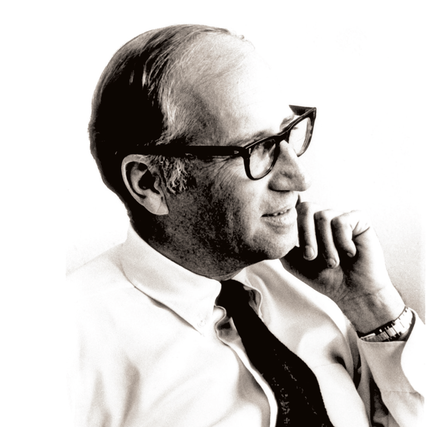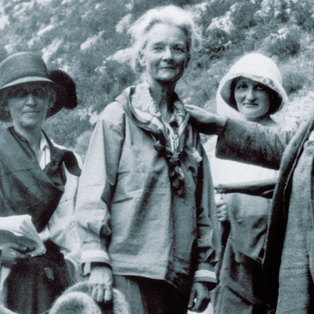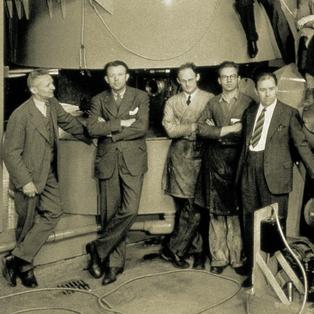The Age of Biomedical and Health Sciences
The changing needs of society can be traced in the history of the sciences at UC Berkeley: from agriculture, mining, and civil engineering to physics, chemistry, electrical engineering and computer sciences. Each discipline, in turn, has met a critical need and played a role in creating life as we know it. The discovery of DNA, the Human Genome Project, gene editing, and other advances that promise to revolutionize life have now put the biological sciences on center stage.

In the 1980s, a group of faculty, headed by the late biochemist Daniel E. Koshland Jr. ’41, restructured the biological sciences, altering not only the way biology was taught but also how research was conducted.
The exciting new possibilities for interaction attracted many top faculty and graduate students, and enrollment in bioscience courses skyrocketed.
A public-private partnership was formed to provide funds for facilities to match the promise of Berkeley’s faculty and students. The Valley Life Sciences Building renovation and construction of the Life Sciences Addition, the Genetics and Plant Biology Building, and Koshland Hall all date from this period.
In the late 1990s, the campus increasingly focused on interdisciplinary research and teaching in the biomedical sciences and bioengineering, along with the training of a new generation of outstanding scientists. These efforts received invaluable support from such benefactors as William V. Power ’30 and Gordon ’50 and Betty Moore.
The California Institute for Quantitative Biosciences (QB3) was established in 2001 with state and private funds, and state-of-the-art Stanley Hall, completed in 2007, serves as QB3’s Berkeley home. And in 2008, philanthropist Tom Siebel launched the Siebel Stem Cell Institute, a collaborative venture between UC Berkeley and Stanford, where Siebel Scholars and postdoctoral fellows continue to translate science into promising medical interventions at rapid pace.
The watershed moment for bioengineering came with the co-discovery of the gene-editing tool CRISPR by UC Berkeley professor Jennifer Doudna, who now runs the Innovative Genomics Institute in the Li Ka Shing Center for Biomedical and Health Sciences. Opened in 2012 as a nexus for multidisciplinary research into the molecular basis for disease, the center was made possible by a $40 million lead gift from global entrepreneur and philanthropist Li Ka-shing. Building on this brain trust is the new Chan Zuckerberg Biohub, a $600 million multi-institutional venture funded by Facebook founder Mark Zuckerberg and his wife, physician Priscilla Chan. In its first year, 13 faculty received a total of $14.5 million over five years to accelerate the pace of discovery toward curing, preventing, and managing deadly diseases through biomedical research.



